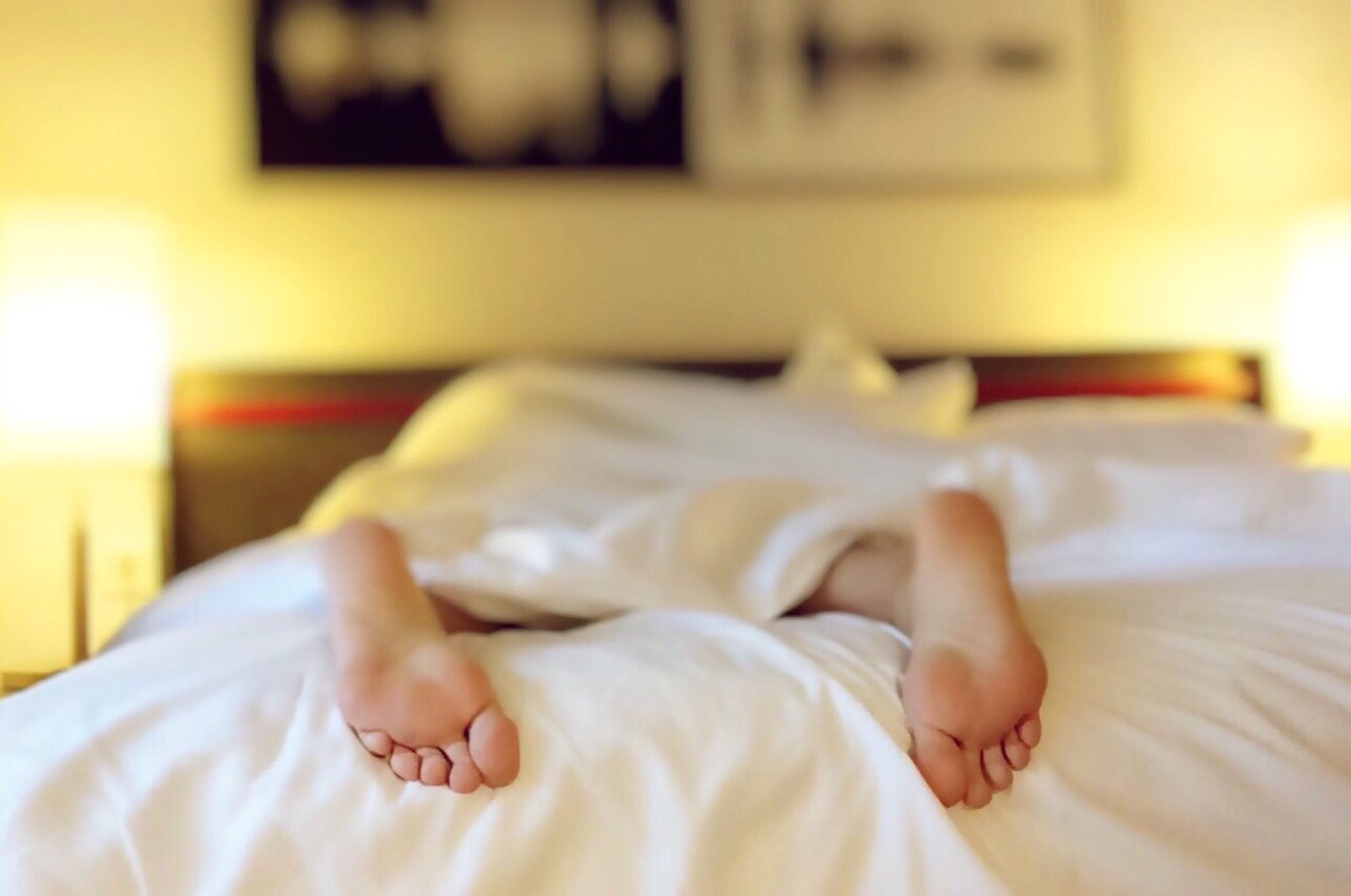
Are you tired of waking up with aching lower back pain every morning? It’s time to say goodbye to those sleepless nights and welcome a pain-free morning routine. In this article, we will explore some effective and simple strategies to alleviate lower back pain caused by your bed. Discover how small changes can make a big difference in improving your sleep quality and overall well-being. Say hello to blissful nights and energized mornings!

Evaluating Your Bed
Recognizing the Signs of a Bad Bed
When it comes to evaluating your bed and determining whether or not it may be the cause of your lower back pain, it’s important to keep an eye out for some common signs of a bad bed. One of the first signs is sagging. If your mattress is visibly sagging in certain areas, it may not be providing the proper support your back needs. Additionally, if you wake up feeling stiff and sore consistently, it could be a sign that your bed is not doing its job. Lastly, if you’ve had your mattress for more than 7-10 years, it’s likely time for a replacement as older mattresses tend to lose their support and can contribute to back pain.
Determining the Right Mattress Firmness
Finding the right mattress firmness is crucial when it comes to alleviating lower back pain. The ideal firmness level will vary from person to person, as everyone has different preferences and needs. In general, a medium-firm mattress is often recommended to provide a good balance of support and comfort. However, some individuals may find that a slightly softer or firmer mattress is more suitable for their specific needs. It’s important to take into account factors such as your weight, sleeping position, and personal preference when determining the right level of firmness for your mattress.
Considering the Age and Condition of Your Mattress
The age and condition of your mattress can greatly impact your sleep quality and contribute to lower back pain. As mentioned earlier, mattresses generally have a lifespan of 7-10 years, after which their support and comfort may start to decline. If you’re experiencing ongoing back pain and your mattress is older, it may be time to consider investing in a new one. Additionally, even if your mattress is relatively new, it’s important to assess its condition to ensure it’s still providing the necessary support. Inspecting for sagging, lumps, and worn-out areas can help determine if it’s time for a replacement or if a mattress topper could be a temporary solution.
Choosing the Right Mattress
Understanding Different Types of Mattresses
When it comes to choosing the right mattress, it’s important to understand the different types available on the market. The most common types of mattresses include innerspring, memory foam, latex, and hybrid mattresses. Innerspring mattresses contain coils that provide support and bounce, while memory foam mattresses offer contouring support by conforming to your body shape. Latex mattresses are known for their durability and natural hypoallergenic properties, and hybrid mattresses combine the benefits of different materials, such as coils and memory foam. Each type has its own unique features and benefits, so it’s worth considering your personal preferences and specific back pain needs when making a decision.
Firmness Levels for Lower Back Pain
Choosing the right firmness level for your mattress is crucial for alleviating lower back pain. As mentioned earlier, a medium-firm mattress is often recommended as it provides a good balance of support and comfort. However, if you prefer a softer feel, you may consider a medium or medium-soft mattress. On the other hand, if you prefer a firmer surface, a medium-firm or firm mattress may be more suitable for you. It’s important to keep in mind that the goal is to maintain proper spinal alignment while ensuring sufficient support for your lower back. Experimenting with different firmness levels and seeking advice from healthcare professionals can help guide you in finding the optimal mattress for your back pain.
Testing Mattresses in the Store
Before making a final decision on a new mattress, it’s essential to test them in-store. While it may feel a bit awkward to lie down on different mattresses in a public place, it’s the best way to determine if a particular mattress feels comfortable and supportive to you. Spend at least 10-15 minutes on each mattress, trying out different sleep positions and movements to mimic how you normally sleep. Pay close attention to how your lower back feels during the testing process. Don’t hesitate to ask the salesperson any questions you may have about the mattress’s features and warranty. Remember, investing time in testing mattresses can save you from potential future sleep discomfort and back pain.

Finding the Ideal Pillow
Understanding the Importance of Pillow Support
While finding the right mattress is crucial, don’t overlook the importance of having an ideal pillow. A supportive pillow is essential in maintaining proper spinal alignment, as it helps alleviate stress on your neck and upper back, which can indirectly impact your lower back. A good pillow should fill the gap between your head and the mattress, keeping your spine in a neutral position. Without proper pillow support, your neck and shoulders may become strained, leading to discomfort and potential lower back pain. Therefore, investing in a high-quality pillow is just as important as choosing the right mattress.
Choosing the Right Pillow Type
When it comes to choosing the right pillow, there are several types to consider. Memory foam pillows are popular for their contouring properties and ability to provide personalized support. They conform to the shape of your head and neck, ensuring optimal alignment. Latex pillows are another great option, as they offer a combination of support and responsiveness. They are hypoallergenic and highly breathable, making them suitable for those with allergies or temperature regulation issues. Down pillows provide a luxurious feel and can be easily shaped to your preferred sleeping position. Ultimately, the right pillow type depends on your personal preference, sleep position, and any specific neck or back pain concerns you may have.
Considering Personal Preferences and Sleep Positions
When selecting a pillow, it’s important to take your personal preferences and sleep positions into account. Side sleepers may benefit from a thicker pillow that fills the gap between the head and shoulder, ensuring proper alignment of the spine. Back sleepers generally require a medium thickness pillow that supports the natural curvature of their neck and the alignment of their spine. Stomach sleepers, who are prone to developing lower back pain, may opt for a flatter pillow or even no pillow at all, to minimize strain on the neck and back. Understanding your preferred sleep position and individual preferences will help guide you towards the best pillow for your specific needs.
Adjusting Your Sleeping Position
Back Sleeping Positions to Alleviate Lower Back Pain
Sleeping on your back can be beneficial for alleviating lower back pain if done correctly. To ensure proper spinal alignment, it’s important to place a pillow or rolled-up towel under your knees to reduce the stress on the lower back. This helps maintain the natural curve of your spine and minimizes any strain on your back muscles. Additionally, using a supportive pillow for your head and neck is crucial to prevent any discomfort or stiffness upon waking up. Experiment with different pillow thicknesses to find the one that supports your neck without causing any strain on your back.
Side Sleeping Positions to Alleviate Lower Back Pain
Side sleeping can also be a favorable position for relieving lower back pain, as it helps maintain the natural curvature of your spine. To optimize this position and minimize strain on your lower back, it’s recommended to place a firm pillow between your knees. This helps align your hips, pelvis, and spine, reducing any potential twisting or pressure on your back. Choosing a pillow that adequately supports your head and neck is equally important. Look for a pillow that keeps your neck in line with your spine, preventing any undue strain that could contribute to lower back discomfort.
Stomach Sleeping Considerations
Sleeping on your stomach is generally not recommended for those experiencing lower back pain. This position can strain the neck and spine and can contribute to discomfort and poor spinal alignment. However, if you find it difficult to transition to a different sleep position, there are a few adjustments you can make to minimize potential strain on your lower back. Place a thin pillow or no pillow at all under your head to maintain a neutral position for your neck. Additionally, tuck a small pillow under your stomach to prevent excessive arching of the lower back. While these adjustments may help reduce discomfort, it’s still advisable to transition to a back or side sleeping position for the best support and alleviation of lower back pain.

Using Additional Supports
Using Body Pillows for Enhanced Lumbar Support
For individuals who require additional support for their lower back, body pillows can be a great solution. Body pillows are large pillows that can be wrapped around your body, providing support to your head, neck, back, and legs simultaneously. By placing a body pillow along the length of your body, you can ensure that your spine remains properly aligned throughout the night. The extra cushioning and support can help alleviate lower back pain and promote a more comfortable sleep. Experiment with different body pillow sizes and shapes to find the one that offers the most effective support for your specific needs.
Investigating Mattress Toppers for Extra Cushioning
If your existing mattress is still in decent condition but lacks the desired level of comfort and support, a mattress topper can be a cost-effective solution. Mattress toppers are layers of cushioning material that can be placed on top of your mattress to enhance its comfort and give it a new lease on life. When choosing a mattress topper, look for one that provides both cushioning and support to relieve pressure points and maintain proper spinal alignment. Memory foam toppers are popular for their contouring properties, while latex toppers offer a more responsive feel. Consider your personal preferences and specific lower back pain needs when selecting a mattress topper.
Trying Lumbar Support Cushions
Lumbar support cushions can provide targeted support to the lower back, making them a valuable addition to your sleep routine. These cushions are specifically designed to fit the curve of your lower back, promoting proper spinal alignment and reducing stress on the muscles and discs in that area. Lumbar support cushions come in various shapes and sizes, including roll-shaped cushions and larger pillows with adjustable straps. They can be used in bed or even when sitting on a chair or sofa to alleviate lower back pain throughout the day. Experiment with different lumbar support cushions to find the most comfortable and effective option for you.
Implementing Proper Sleep Posture
Maintaining Proper Alignment of the Spine
Maintaining proper alignment of the spine during sleep is crucial for preventing and alleviating lower back pain. One of the key factors in achieving proper alignment is ensuring that your spine remains in a neutral position. This means that the natural curves of your spine – the cervical, thoracic, and lumbar regions – are supported and not overly strained. Whether you’re a back, side, or stomach sleeper, it’s important to pay attention to your sleep posture and adjust accordingly to maintain proper spinal alignment. Using the right mattress, pillow, and additional supports can greatly assist in achieving and maintaining proper sleep posture.
Avoiding Twisting or Bending the Back while Sleeping
Twisting or bending your back while sleeping can put strain on the muscles and discs in your lower back, potentially leading to discomfort and pain. To avoid these issues, it’s important to be mindful of your sleep positions and movements throughout the night. When transitioning between positions, try to move your entire body as a unit, rather than twisting or rotating from your lower back. Additionally, ensure that your mattress and pillow adequately support your spine, preventing it from unnaturally twisting or bending during the night. By avoiding excessive twisting or bending, you can help protect your lower back and promote better sleep quality.
Placing Pillows Strategically
Strategically placing pillows can greatly aid in achieving and maintaining proper sleep posture. For back sleepers, using a thin pillow under your head and a small pillow or rolled-up towel under your knees can help support the natural curve of your spine. Side sleepers can benefit from placing a pillow between their knees and a supportive pillow for their head and neck. Stomach sleepers, if continuing in that position, should consider using a thin pillow or no pillow at all under their head to minimize strain on the neck and lower back. Experiment with different pillow placements to find the most comfortable and supportive configuration for your sleep posture.
Strengthening Your Core
Understanding the Importance of a Strong Core
A strong core is vital for maintaining proper posture and overall spinal health. The muscles in your core – including the abdominals, obliques, and lower back muscles – provide stability and support for your spine and pelvis. By strengthening these muscles, you can help alleviate lower back pain and enhance your body’s ability to maintain proper alignment both during the day and while sleeping. Engaging in exercises that target your core can play a significant role in reducing the likelihood of future lower back pain and improving your overall sleep quality.
Engaging in Core-Strengthening Exercises
Incorporating core-strengthening exercises into your regular fitness routine can have a positive impact on your lower back health. Planks, bridges, and bird dogs are just a few examples of exercises that target the core muscles and promote stability. It’s important to start slowly and gradually increase the intensity and duration of your workouts to avoid injury. If you’re unsure about which exercises are most suitable for your fitness level and specific lower back pain concerns, consider consulting a personal trainer or physical therapist who can guide you through a personalized core-strengthening program.
Incorporating Yoga or Pilates
Yoga and Pilates are two forms of exercise that focus on improving flexibility, strength, and body awareness. Both disciplines offer a wide range of exercises and poses that specifically target the core muscles and promote proper alignment. Practicing yoga or Pilates regularly can help strengthen your core, improve your posture, and reduce the likelihood of experiencing lower back pain. Moreover, these activities can also promote relaxation and stress reduction, which can positively impact the quality of your sleep. Whether you prefer attending classes or following online tutorials, incorporating yoga or Pilates into your routine can be a valuable addition to your overall back pain management strategy.
Practicing Good Sleep Hygiene
Establishing a Consistent Sleep Schedule
Establishing a consistent sleep schedule is crucial for maintaining good sleep hygiene and minimizing the risk of developing lower back pain. Going to bed and waking up at the same time every day helps regulate your body’s internal clock and promotes more restful and rejuvenating sleep. Aim for 7-9 hours of uninterrupted sleep each night to allow your body and muscles to recover and repair. By sticking to a regular sleep schedule, you can optimize your body’s natural sleep-wake cycle and promote better overall sleep quality.
Creating a Relaxing Bedtime Routine
Creating a relaxing bedtime routine can help signal to your body that it’s time to wind down and prepare for sleep. Engaging in activities that promote relaxation, such as reading a book, taking a warm bath, or practicing deep breathing exercises, can help reduce stress and encourage a more peaceful transition into sleep. It’s important to avoid stimulating activities, such as electronic device use or intense exercise, close to bedtime, as these can interfere with your ability to fall asleep and stay asleep. By prioritizing a calming and consistent routine before bed, you can set the stage for a more restful night’s sleep and potentially alleviate lower back pain.
Optimizing Your Sleep Environment
Creating an optimal sleep environment can greatly contribute to a good night’s sleep and help alleviate lower back pain. Start by ensuring your bedroom is dark, cool, and quiet. Consider using blackout curtains, earplugs, or a white noise machine to minimize external distractions that could disrupt your sleep. Additionally, invest in a supportive mattress and comfortable bedding that suits your specific needs and preferences. Your sleep environment should be free of clutter and provide a relaxing ambiance to enhance relaxation and promote better sleep quality.
Seeking Professional Help
Consulting a Healthcare Provider
If you’ve tried various strategies to alleviate lower back pain caused by your bed and haven’t seen significant improvement, it may be time to consult a healthcare provider. They can help assess your specific situation, conduct a thorough examination, and provide recommendations tailored to your individual needs. Your healthcare provider may further investigate underlying causes of your lower back pain or refer you to specialists such as physical therapists or chiropractors for additional support and treatment options. Seeking professional help is an important step in finding long-term relief from lower back pain and improving your overall sleep quality.
Visiting a Physical Therapist or Chiropractor
Physical therapy and chiropractic care can be valuable resources for those experiencing lower back pain caused by their bed. These professionals specialize in diagnosing and treating musculoskeletal issues, including back pain. They can provide targeted exercises, manual therapy, and other interventions to alleviate pain, improve range of motion, and enhance overall spinal health. Physical therapists and chiropractors can also assess your sleeping posture, ergonomic setup, and recommend specific modifications to prevent future pain. Utilizing their expertise can significantly contribute to your journey of finding relief from lower back pain and optimizing your sleep experiences.
Exploring Massage Therapy for Pain Relief
Massage therapy can be an effective complementary treatment for relieving lower back pain and promoting relaxation. Through targeted manual manipulation of the muscles and soft tissues, massage therapists can help improve blood circulation, release tension, and reduce muscle tightness in the lower back area. Regular massage sessions can also enhance your overall sense of well-being and provide stress relief, both of which can positively impact your ability to sleep comfortably and without pain. Consult with a licensed massage therapist to discuss your specific lower back pain concerns and explore how massage therapy can be incorporated into your overall pain management and sleep routine.
Preventing Future Lower Back Pain
Maintaining Proper Posture During the Day
Maintaining proper posture throughout the day is essential for preventing future lower back pain. Be mindful of your sitting and standing posture, ensuring that your spine remains in a neutral alignment. Sit with your back supported and feet flat on the ground, and avoid slouching or rounding your shoulders forward. When standing, distribute your weight evenly between your feet and engage your core muscles to support your spine. Practicing good posture habits can reduce stress on your lower back and reduce the likelihood of experiencing discomfort while sleeping or during daily activities.
Using Ergonomic Furniture and Accessories
Using ergonomic furniture and accessories can play a significant role in preventing lower back pain caused by your bed. Invest in an ergonomic chair that supports your lumbar region and promotes proper spinal alignment while working or sitting for extended periods. If you frequently work from bed or enjoy reading or watching TV in a reclined position, consider using a adjustable bed frame or back support cushions to maintain proper posture and reduce strain on your lower back. Additionally, using supportive pillows and cushions in your car, at the office, or on other seating surfaces can provide additional comfort and support throughout the day.
Incorporating Regular Exercise and Stretching
Regular exercise and stretching are crucial for maintaining a strong, flexible, and pain-free back. Engaging in activities such as walking, swimming, or yoga can help strengthen your back and core muscles, improve flexibility, and promote better posture. Additionally, incorporating regular stretching exercises that target the lower back, hips, and hamstrings can help release tension and improve overall spinal mobility. It’s important to consult with a healthcare provider or physical therapist to develop a safe and effective exercise routine that addresses your specific needs and limitations. By making exercise and stretching a regular part of your routine, you can reduce the risk of future lower back pain and enhance your overall sleep quality.
In conclusion, evaluating and improving your bed can greatly contribute to alleviating lower back pain and optimizing your sleep experiences. By recognizing the signs of a bad bed, determining the right mattress firmness, and considering the age and condition of your mattress, you can make informed decisions on selecting the right mattress for your needs. Additionally, finding the ideal pillow, adjusting your sleeping position, and using additional supports such as body pillows, mattress toppers, and lumbar support cushions can further enhance your sleep posture and alleviate lower back pain. Implementing proper sleep posture, strengthening your core, practicing good sleep hygiene, seeking professional help, and taking preventive measures like maintaining proper posture and incorporating regular exercise and stretching can all contribute to a healthier back and better sleep quality. Remember, each individual is unique, so it’s important to find the strategies and solutions that work best for you and prioritize your overall well-being and comfort.





